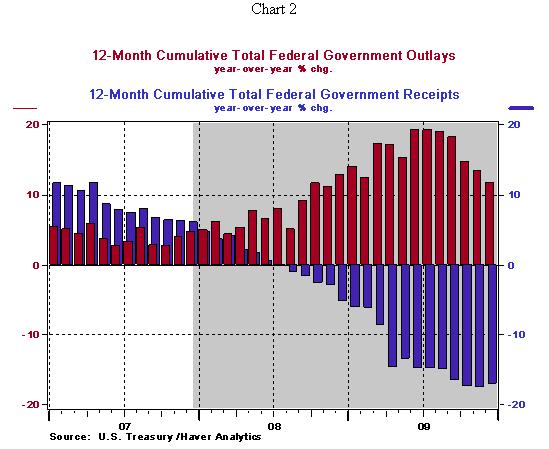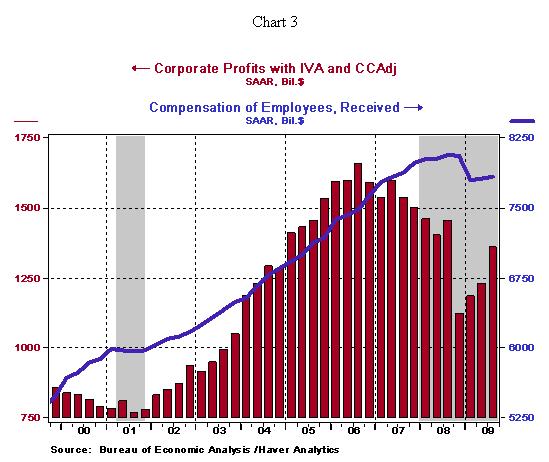Ballooning U.S. Treasury Deficits, It Takes both Outlays and Receipts to Tango
Economics / US Debt Jan 15, 2010 - 01:24 AM GMTBy: Paul_L_Kasriel
 On Wednesday, the U.S. Treasury reported a record cumulative deficit over the 12 months ended December 2009 of $1.472 trillion (see Chart 1). Although the editorial board of the WSJ surely will rail against exploding federal spending, it will probably fail to mention another key driver of ballooning federal deficits - collapsing federal receipts.
On Wednesday, the U.S. Treasury reported a record cumulative deficit over the 12 months ended December 2009 of $1.472 trillion (see Chart 1). Although the editorial board of the WSJ surely will rail against exploding federal spending, it will probably fail to mention another key driver of ballooning federal deficits - collapsing federal receipts.
Chart 1

Yes, as shown in Chart 2, the year-over-year growth in 12-month cumulative federal government outlays remains in double digits, which it entered in October 2008. But notice that the growth rate in federal outlays is slowing. It peaked at 19.2% in July 2009. As of December 2009, the year-over-year growth in 12-month cumulative federal outlays had slowed to 11.8% -- the slowest since December 2008's 12.8% growth. But look at what has been happening to the year-over-year rate of contraction in 12-month cumulative total federal receipts.
In the 12 months ended December 2009 vs. the 12 months ended December 2008, total federal receipts contracted by 17.1%, a slightly slower rate of contraction than the 17.6% rate of contraction in the 12 months ended November. Of course, receipts are contracting. The U.S. economy has only recently emerged from its longest and deepest recession in the post-war era in which both corporate profits and wage/salary income collapsed (see Chart 3). Moreover, personal income taxes were cut by both the Bush (Jr.) and Obama administrations, something the editorial board of the WSJ presumably approved of.
Chart 2

Chart 3

In sum, although high growth in federal spending is contributing mightily to our record federal deficit, the rate of growth in that spending is slowing. What often is forgotten is that the rate of contraction in federal receipts has accelerated.
Paul Kasriel is the recipient of the 2006 Lawrence R. Klein Award for Blue Chip Forecasting Accuracy
By Paul L. Kasriel
The Northern Trust Company
Economic Research Department - Daily Global Commentary
Copyright © 2010 Paul Kasriel
Paul joined the economic research unit of The Northern Trust Company in 1986 as Vice President and Economist, being named Senior Vice President and Director of Economic Research in 2000. His economic and interest rate forecasts are used both internally and by clients. The accuracy of the Economic Research Department's forecasts has consistently been highly-ranked in the Blue Chip survey of about 50 forecasters over the years. To that point, Paul received the prestigious 2006 Lawrence R. Klein Award for having the most accurate economic forecast among the Blue Chip survey participants for the years 2002 through 2005.
The opinions expressed herein are those of the author and do not necessarily represent the views of The Northern Trust Company. The Northern Trust Company does not warrant the accuracy or completeness of information contained herein, such information is subject to change and is not intended to influence your investment decisions.
Paul L. Kasriel Archive |
© 2005-2022 http://www.MarketOracle.co.uk - The Market Oracle is a FREE Daily Financial Markets Analysis & Forecasting online publication.



